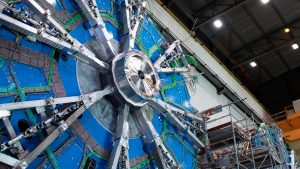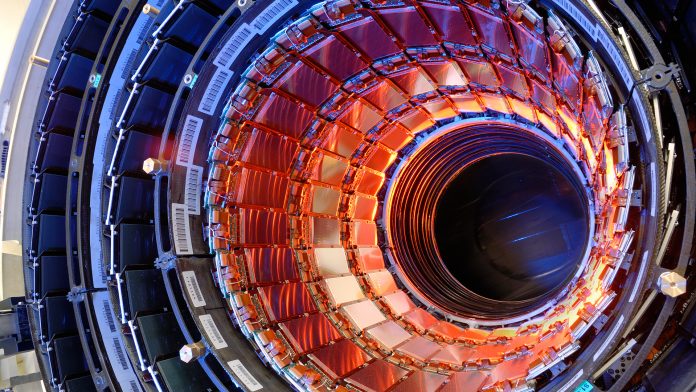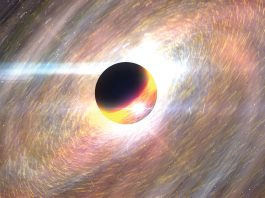AIDA-2020, a project co-funded by the European Commission, has made great progress in improving particle detectors’ performance.
Particle detectors and accelerators are used in particle physics research to probe big existential questions related to the origin of the Universe and its basic constituents. What was the origin of the Universe? What are we made of? Are there new kinds of matter or new forces of nature? AIDA-2020, a project co-funded by the European Commission under Horizon 2020, has made great research efforts to improve particle detectors’ performance in areas from software, data acquisition and microelectronics, to cryogenics, gas detectors, and calorimeters for the next generation of accelerator projects. AIDA-2020 came to an end in April 2020, but its many advancements will continue to support future fundamental research and technologic developments with applications in various domains.
The science of detection
In particle accelerators like the 27km Large Hadron Collider (LHC) at CERN, the European Organisation for Nuclear Research, beams of particles collide at the centre of a particle detectors like a small Big Bang, creating new particles that fly out in all directions. Different detector systems, arranged in layers around the collision point and filling experimental halls the size cathedrals, allow individual particles to be precisely measured: tracking devices record the trajectory of a particle, calorimeters determine its energy; other dedicated detectors use a range of techniques to identify the particles, generating an enormous flow of data. Complex data-acquisition systems and algorithms are used to analyse the vast amounts of collision events, store and process the resulting data.
To explore the full potential of the LHC and open the possibility for new scientific discoveries, higher luminosity from more intense beams is needed; they imply more complex collision events and demand detectors that are able to provide finer details and higher precision, that is more data at higher speed. While the Standard Model of Particle Physics can explain all the atomic and sub-atomic effects known today, many questions remain without an answer and from astrophysical observations, we know that new types of matter exist. To search for them and to further study the Higgs boson discovered at CERN, the four LHC experiments will see their detectors upgraded to offer more precise measurements than ever to answer the instrumentation needs of 10 times the luminosity of the LHC or to allow a deeper exploration of strongly interacting matter at extreme energy densities.
“Particle detectors are complex systems. Often, research and development in this area bring together a range of disciplines that must complement one another to meet the requirements of the future colliders,” explains Felix Sefkow, project co-ordinator of AIDA-2020.
However, not all AIDA-2020 advancements are related to the upgrade of the LHC experiments. Many will be used to that end, but AIDA-2020 had a more comprehensive approach. One such example is the support of ProtoDUNE, a large-scale prototype of a liquid-argon based neutrino detector for the DUNE (Deep Underground Neutrino Experiment) collaboration. Neutrinos, the most mysterious matter particles in the Universe, may help answer one of the most important questions in physics: why we live in a Universe dominated by matter over antimatter.
A collaborative endeavour
The AIDA-2020 quest for the ultimate particle detector performance has pushed emerging technologies beyond their limits, contributing to strengthening Europe’s technological potential. Some examples are the pixelated and fast image sensors, high-density microelectronics integration or ultra-light mechanical structures, and microscopic cooling.
The almost-industrial scale of the particle physics installations is one of the roots of the economic impact of research-driven developments in the context of AIDA-2020. The role of industry is rapidly increasing, because current and future detectors are bigger and more complex than ever. Their construction needs advanced technologies and highly specialised equipment, for example for microelectronics integration. Moreover, due to the scale of the installations, thousands or millions of components require industrial-scale production and quality-control infrastructure. The large quantities required are beyond the capabilities of the academic sector alone.

Innovation with societal impact
The close co-operation between academic and industrial partners fosters technology transfer in two ways. Working on ambitious challenges requiring creative solutions strengthens the competence and competitiveness of industrial partners in other markets. On the other hand, the direct collaboration also helps to identify, at an early stage, the potential for commercial spin-off applications of science-driven technological developments, with corresponding implications on competitive advantages. The most prominent known applications of detector technology are of fast sensors in medical imaging, national security and automotive industries (driver assistance systems and autonomous driving), microelectronics integration and cooling, and ultralight structures for aerospace applications.
AIDA-2020 aimed to facilitate this process in the course of the project. With the underlying goal of supporting the steps between an idea for a commercial application and a prototyped product, the AIDA-2020 Proof-of-Concept fund was set up to support development projects with the potential to reach commercial application. Three projects were selected to benefit the fields of radiotherapy, telecommunications, and environmental monitoring.
All three projects report successful results; two of the host organisations signed a licence agreement with companies to transfer the technology to Industry, and one of the projects resulted in the creation of a start-up company BAQ, dedicated to create an innovative radon-monitoring device and accompanying cloud-based services to drive mitigation measures based on real-time data.
“In the end, our very ambitious, but sensible goal is to cut-down the radon dose deposited in the lungs by a factor of two, reducing the number of radon-related cancer cases,” says Alessandro Curioni, founder of BAQ.
Research into the fundamental structure of the Universe requires innovative technologies for accelerators, detectors and computing systems, developed together with a variety of partners. The collaborations take a range of forms, from the exploitation of scientific activities and technologies, to the procurement of components co-developed with Industry, to the application of technology developed under AIDA-2020 in areas like medical imaging, geology, and environmental monitoring. The AIDA-2020 community will continue to work on key detector technologies and strategic developments for future particle detectors at future accelerators.
This project has received funding from the European Union’s Horizon 2020 Research and Innovation programme under Grant Agreement no. 654168.
Daniela Antonio
Aurelie Pezous
Felix Sefkow
felix.sefkow@desy.de
daniela.maria.antonio@cern.ch
http://aida2020.web.cern.ch
www.linkedin.com/company/cern
Please note, this article will also appear in the second edition of our new quarterly publication.









